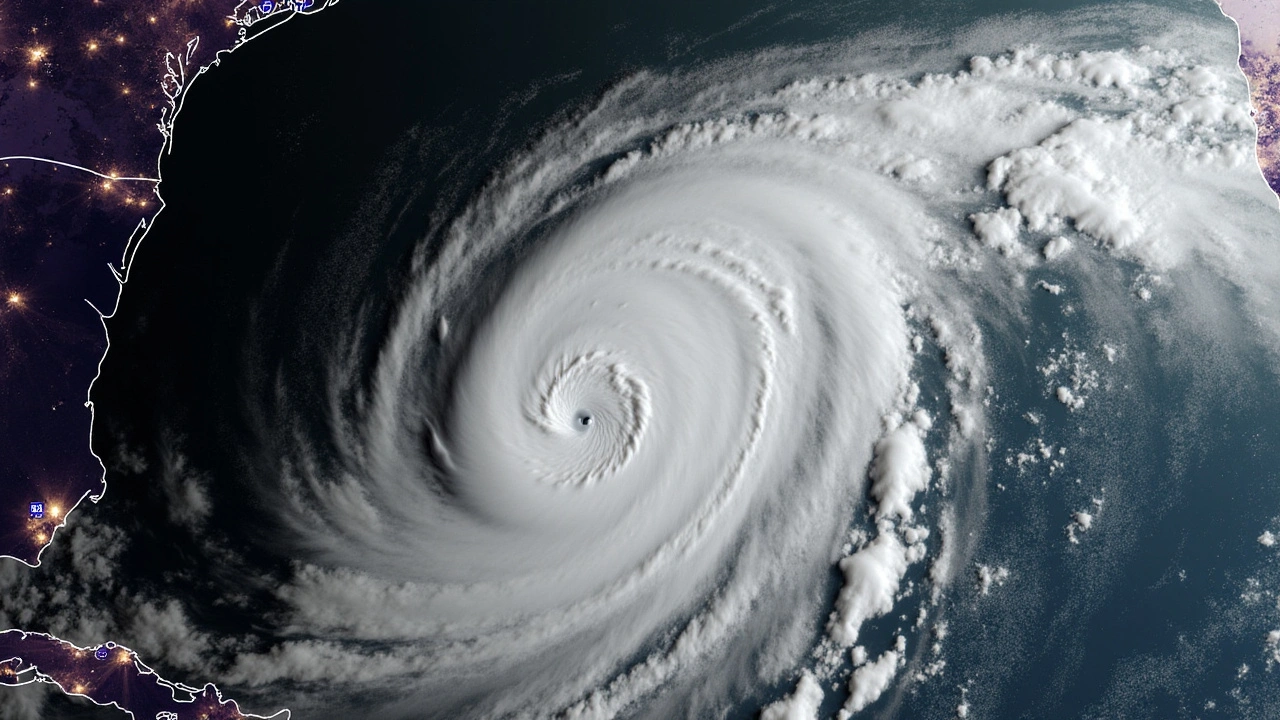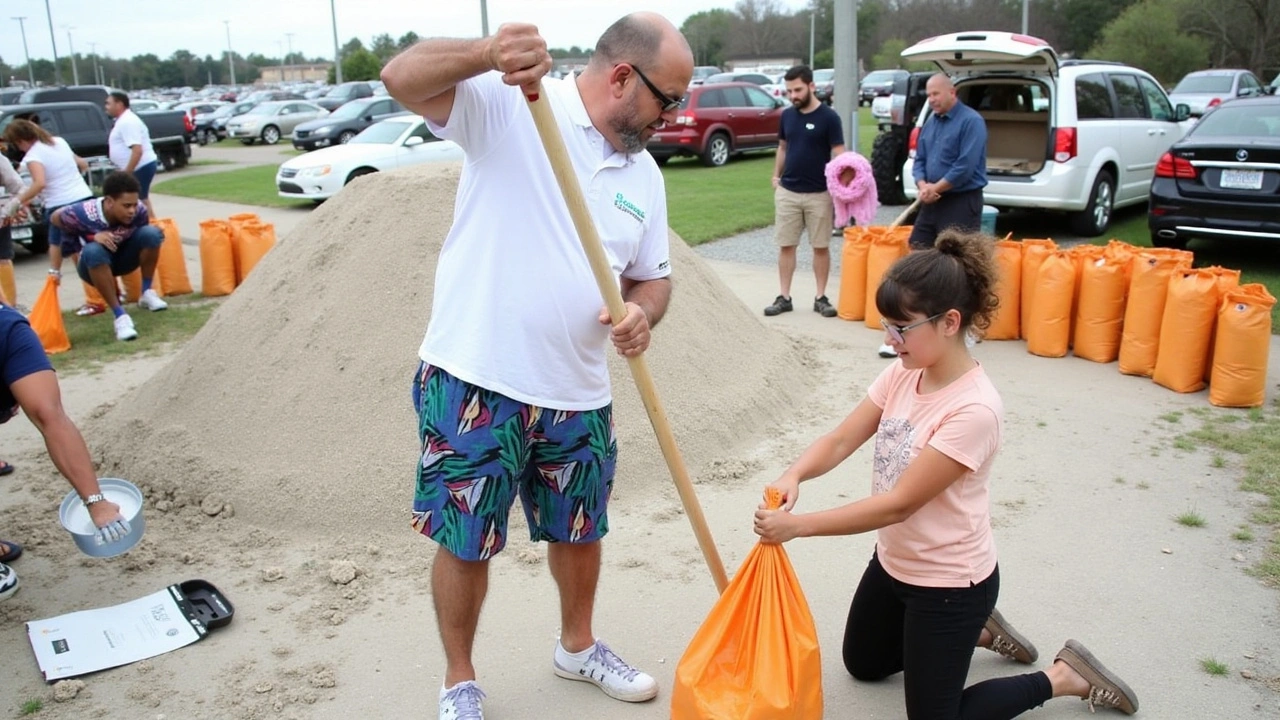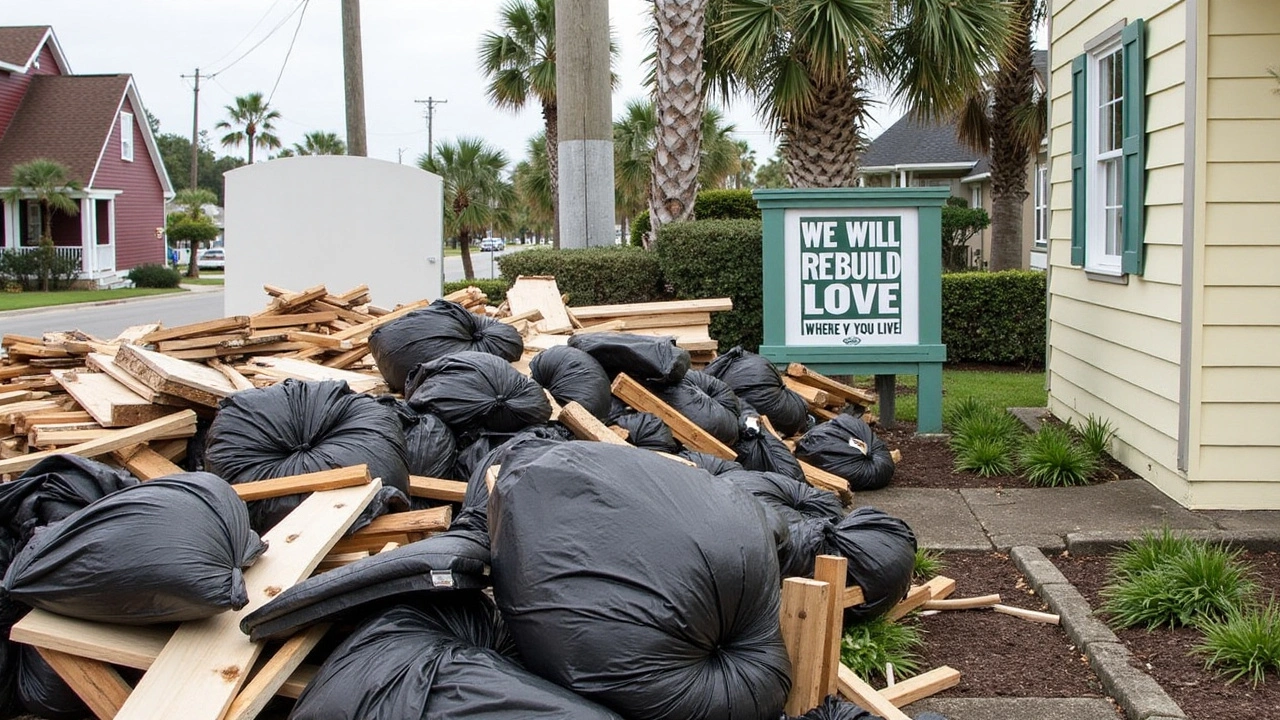Hurricane Milton's Threat Intensifies for Florida
With the wake of Storm Helene's destruction fresh in memory, the announcement of Hurricane Milton's approach has plunged the state of Florida into a heightened state of emergency. In response to meteorological alerts signaling the potential escalation of Tropical Storm Milton into a hurricane, a sense of urgency has enveloped local authorities and residents alike. President Biden declared that evacuations in affected regions are a 'matter of life and death', underscoring the critical nature of the upcoming storm and the necessity of preparing for its possible impacts. Florida's Governor Ron DeSantis has already imposed emergency declarations across 35 counties, prioritizing the swift restoration of infrastructure ahead of Hurricane Milton's anticipated arrival.
Currently churning off Mexico's coastline, Storm Milton is on track to gain strength rapidly, bearing down on Florida's western shores with potentially life-threatening conditions. Forecast models suggest a trajectory that could deliver a significant blow to already vulnerable communities, especially those still grappling with the aftermath of Hurricane Helene. The National Hurricane Center has sounded the alarm, indicating the prospect of Milton becoming a formidable hurricane as it approaches Florida later this week. Consequently, inhabitants remain on high alert, vigilant for evacuation orders and advisories from emergency management officials and meteorologists alike.

The Precarious Impact of Preceding Hurricane Helene
The devastation wrought by Hurricane Helene serves as a poignant reminder of the fierce power of nature and the calamities that may unfold with subsequent storms. Helene remains among the deadliest in recent history, wreaking havoc along the southeastern United States with a force equated to Hurricane Katrina's terror in 2005. Tragically, at least 225 lives were lost across the mainland, with Florida counting 14 of those fatalities within its borders. Recovery efforts remain ongoing, the scars of Helene's devastation still visible in infrastructural damage, power outages, and disrupted lives.
Lasting physical damage complicates recovery, introducing challenges as the state braces for the looming menace of Hurricane Milton. Historical data underscores the continued vulnerability of affected areas, where recovery strategies include aggressive initiatives to bolster vulnerable infrastructure, ensuring homes, businesses, and critical services are hardened against potential storm impacts. Efficient evacuation strategies, effective harboring options, and accessible emergency services stand as integral components within this broader resilience framework.

Forecasts Paint a Grim Picture
The impending impact of Hurricane Milton has painted a disconcerting image of the potential chaos ensuing from persistent systemic failures. Meteorological forecasts predict an abundance of rainfall, suggesting precipitation totals from 5 to 8 inches across the Peninsula and the Keys, with the potential for some locations to experience upward of 12 inches. This projected deluge puts many areas at risk of flash flooding and moderate river flooding – especially within the western coastline regions. Besides, anticipated strong winds can exacerbate structural vulnerabilities and exacerbate regional mobility challenges, obstructing emergency response efforts, isolating communities, and prolonging recovery periods.
Besides expected natural threats, persistent weather disturbances naturally heighten existing socio-economic disparities, predominantly affecting those from underrepresented groups. Efficacious risk management strategies include prioritizing comprehensive community engagement initiatives that would empower diverse populations to participate in preparedness procedures, mitigating potential unmeasurable losses and hardship.

Mitigation Efforts and the Path Forward
With history proving the devastating potential of untamed tropical storms, authorities at the federal and state levels have coordinated all resources towards minimizing further disaster risks. Critical to these initiatives is the engagement of local governments and non-governmental organizations, aiming to bridge critical resource gaps and reach populations located in geographically challenging locales.
By creating seamless coordination networks, these alliances offer valuable infrastructural and emotional support during crisis and recovery periods. Additionally, fortifying communities through updated disaster mitigation mechanisms, coupled with technology-driven forecasting tools, ensures cleared channels and efficient resource allocation in emergencies. This multi-pronged strategy aims to enhance the state's capacity to anticipate, respond, and adapt to ongoing climate events, ultimately reducing risks and promoting resilience against tropical storms threatening Florida and the broader Gulf Coast corridor.







Jasmine Hinds
Stay safe everyone! Pack your bug‑out bags now 😃 Get those shutters on and listen to your local officials 🚨
Madison Neal
We really need to operationalize the mitigation strategies and leverage the resilience framework to safeguard vulnerable communities while ensuring that resource allocation aligns with the projected floodplain analyses.
John Crulz
The situation calls for a balanced approach that integrates both scientific data and community experiences; fostering collaboration between meteorologists and local volunteers can improve evacuation efficiency.
Anita Drake
It’s essential that we honor diverse cultural perspectives in our response plans, ensuring that outreach materials are accessible and that no community feels overlooked.
Eduardo Lopez
These reckless developments are a moral failing of our society; we must demand higher standards of accountability from policymakers and reject any complacency.
Nancy Perez de Lezama
Your plan sounds reckless.
Matt Heitz
As proud Americans we cannot stand by while our homeland is threatened; it is our patriotic duty to support robust infrastructure and decisive action.
Susan Mark
Honestly, the situation looks serious but staying calm helps us think clearly; make sure you have enough water, non‑perishable food, and a reliable charging source.
Jason Jennings
They’re overhyped, nothing new.
Diego Vargas
Theres no doubt that the coriolis effect intensifies wind shear and that the sea‑surface temperature anomalies will feed the storm further.
Alex Lee
This is just a disaster waiting to happen.
Vida Yamini
Friends remember that preparation is a marathon not a sprint
Every household should double‑check its emergency kit and replace any expired items
Make a clear evacuation route plan and share it with every family member
Practice that route at least once so everyone knows where to go under stress
Secure outdoor furniture and loose items that could become projectiles in high winds
Charge all essential electronics and keep backup power sources handy
Stay informed by following official weather updates and avoid rumors
Consider the needs of pets and bring carriers, food, and medication
Check on elderly or disabled neighbors and offer assistance if possible
Keep important documents in a waterproof bag that can be grabbed quickly
Keep a cash reserve in case ATMs are down during power outages
Know the locations of nearest shelters and the capacity limits they have
If you live in a flood‑prone area, elevate valuables and move furniture to higher ground
Maintain a clear line of communication with family members using a pre‑arranged meeting point
Finally remember that community resilience grows when we look out for each other and act with compassion
James Lawyer
From a legal standpoint, adherence to the declared emergency orders is obligatory, and failure to evacuate could result in liability issues for both individuals and property owners.
Abby Culbertson
I feel a bit numb about this whole thing and just hope everyone stays safe.
Awolumate Muhammed Abayomi
Lets all pull together and do our best to help eachother, stay strong and keep the prayers coming!